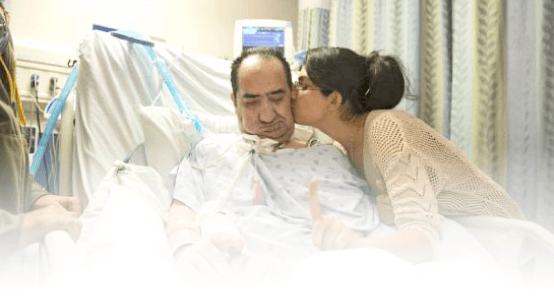Podcast: Play in new window | Download
Subscribe: Apple Podcasts | RSS
Hi, it’s Patrik Hutzel from intensivecarehotline.com with another quick tip for families in intensive care.
Today, I want to focus on pressure area care when someone is on ECMO, whether that’s VV or VA ECMO for either heart failure or lung failure, it doesn’t really matter. So why do I want to focus on that today? Because if you have a loved one in intensive care on ECMO for either heart failure or for lung failure, the risk for pressure sores to develop is pretty high. And why is that?
Well, when you turn a patient in intensive care on ECMO, they can drop their blood pressure pretty quickly. It also takes quite a few people to turn someone on ECMO. You need someone to hold the cannula. You need someone to hold the tracheostomy or the breathing tube. You need at least four or five people.
And sometimes patients are so hemodynamically unstable that it’s very risky to turn them. And if they’re not getting turned and they’re not getting their backs washed & linen changed, the risk of a pressure, sore to develop is very high. And if a pressure sore does develop, one of the biggest risks then is that your loved one ends up with an infection with the sepsis. And they’re at a critical stage already if they’re on ECMO. If someone is on ECMO, they are one of the sickest patients in intensive care. And on top of that, the last thing they need is a pressure sore.
The other thing that’s often happening when it comes to pressure sores is when someone in intensive care is on inotropes or vasopressors such as noradrenaline in particular. And some ECMO patients can be on high doses of noradrenaline. They are vasoconstrictors, meaning the peripheries, the skin doesn’t get a lot of perfusion and therefore patients are even at higher risk of pressure sores.
So you really got to do your research from day one when you have a loved one in intensive care. As you can see, the biggest challenge for families in intensive care is simply that they don’t know what they don’t know. They don’t know what to look for. They don’t know what questions to ask and they don’t know their rights and they don’t know how to manage doctors and nurses in intensive care.
So another way to manage those situations where blood pressure drops, heart rate drops when someone is getting turned for washes, or for linen changes when they’re on ECMO is simply by using a hoist. And they need to be lifted up so that the nurses can wash patients’ backs, stimulate circulation on the back and on the bottom and also change linen then.
Another option to manage low blood pressure is to potentially look at a high-flow cannula. High-flow cannulas can help with ECMO and most patients do have a high-flow cannula, but not every patient has a high-flow cannula. So that’s another way to manage that.
Another way to manage it is often to give a unit of blood. A lot of patients when they’re on ECMO, their hemoglobin, their red blood cells are low and often a unit of blood might help to manage low flows and low blood pressure as well when patients are getting turned in particular.
Another thing to look out for when someone is on ECMO is obviously blood clots because they can be quite common. So there’s a lot of things to look for. The devil is absolutely in the detail when someone is critically ill in intensive care, let alone on ECMO.
You need a professional to dive into the material so that you understand what is really happening when your loved one is in intensive care on ECMO.
That is my quick tip for today. Thank you for watching this video.
If you have a loved one in intensive care, go and check out intensivecarehotline.com or call us on one of the numbers on the top of the website, or simply send me an email to [email protected].
Like this video, comment below what you want to see next, or what insights you have from this video, and subscribe to my YouTube channel for updates for families in intensive care.
This is Patrik Hutzel from intensivecarehotline.com and I will talk to you in a few days.



